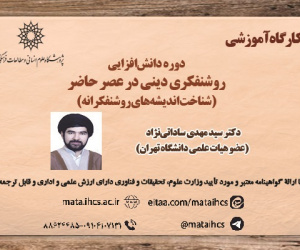ارایه مدلی برای تبیین پیشایندها و پسایندهای نفرت از برند از نظر مشتریان بانک های دولتی (مقاله علمی وزارت علوم)
درجه علمی: نشریه علمی (وزارت علوم)
آرشیو
چکیده
هدف: امروزه مدیریت برند، کلید موفقیت رسیدن به مزیت رقابتی پایدار در صنایع خدمات، همچون بانکداری که دارای محصولات کم و بیش مشابه هستند تلقی می شود. این پژوهش با هدف ارایه مدلی برای تبیین پیشایندها و پسایندهای نفرت از برند از نظر مشتریان بانک های دولتی انجام می گیرد. روش: نوع پژوهش حاضر از لحاظ ماهیت مسأله و هدف، پژوهشی کاربردی و از لحاظ روش پژوهش، یک پژوهش توصیفی-پیمایشی است. جامعه آماری پژوهش شامل تمامی مشتریان بانک های دولتی استان قم در سال 1402 است. همچنین جهت تجزیه و تحلیل داده ها و آزمون فرضیات پژوهش از روش معادلات ساختاری و نرم افزارهایSPSS و LISREL استفاده شده است. یافته: نتایج حاکی از تأثیر معنادار ناسازگاری نمادین بر نارضایتی، تجربه منفی گذشته بر نارضایتی، عدم مسئولیت پذیری اجتماعی شرکت بر نارضایتی، کیفیت پایین محصول بر نارضایتی، نارضایتی بر نفرت از برند، نفرت از برند بر تبلیغات دهان به دهان منفی، نفرت از برند بر اجتناب از برند، نفرت از برند بر انتقام از برند، نفرت از برند بر کاهش/توقف حمایت از برند و نفرت از برند بر شکایت از برند بود.نتیجه گیری: تمام ده فرضیه اصلی پژوهش مورد تایید قرار گرفت. نتایج این پژوهش نشان داد که مدیران ارشد بانک های دولتی می بایست در تمامی رسانه ها از قبیل رادیو، تلویزیون و روزنامه، در مورد شیوه خدمت رسانی بانک، تسهیلات، شیوه های دریافت وام، شیوه سپرده گذاری ها و غیره تبلیغات روشن و قابل فهم ارائه دهند تا از این طریق مشتریان به تفاوت این بانک ها با بانک های رقیب پی ببرند.Presenting a model to explain the antecedents and consequences of brand hatred from the point of view of the customers of state banks
Purpose: Today, brand management is considered the key to achieving sustainable competitive advantage in service industries, such as banking, which have more or less similar products. This research aims to provide a model to explain the antecedents and consequences of brand hatred from the point of view of the customers of state banks. Method: In terms of the nature of the problem and purpose, the present research is an applied research and in terms of the research method, it is a descriptive-survey research. The statistical population of the research includes all the customers of the state banks of Qom province in 1402. Also, structural equation method and SPSS and LISREL software were used to analyze the data and test the research hypotheses.Findings: The results indicate a significant effect of symbolic incompatibility on dissatisfaction, past negative experience on dissatisfaction, lack of corporate social responsibility on dissatisfaction, low product quality on dissatisfaction, dissatisfaction on brand hatred, brand hatred on negative word-of-mouth advertising, brand hatred on brand avoidance, brand hatred on brand revenge, brand hatred on reducing/discontinuing brand patronage and brand hatred on brand complaints. Conclusion: All ten main research hypotheses were confirmed. The results of this research showed that the senior managers of state-owned banks should provide clear and understandable advertisements in all media such as radio, television and newspapers about the bank's service methods, facilities, methods of receiving loans, deposit methods, etc., in order to through customers to find out the difference between these banks and competing banks.







